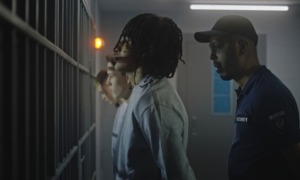Surge. Spike. A gathering storm.
All of the above have been used in media coverage to describe trends in the most recent youth crime statistics – much to the chagrin of prominent juvenile justice researchers who convened last month to discuss the chatter about youth crime waves around the nation.
Overall, arrests of juveniles dropped 2 percent from 2004 to 2005, according to FBI data. However, the number arrested for murder and robbery increased, which might be fueling much of the talk about increases in youth crime.
In such areas as Washington, D.C., and Florida, local law enforcement officials have blamed juveniles for a large share of the increases in overall violent crime.
Are we at the onset of a juvenile crime wave? Or is this the inevitable leveling off of the precipitous declines in youth crime during the previous decade?
“It’s a mixed picture,” Chapin Hall Research Fellow Jeffrey Butts said at last month’s forum, at the Urban Institute in Washington. One thing appears fairly certain, he said: “The famous crime decline in America is over.”
In the majority of violent and nonviolent categories, the FBI data show that juvenile arrests have continued to decline while adult arrests have risen. The three exceptions in 2005 were arrests of youth for murder (up 20 percent, to 1,300), robbery (up 11 percent, to 28,900) and weapons possession (up 7 percent, to 44,800).
Considering the relatively small raw numbers involved in the national juvenile totals, it’s hard for juvenile justice researchers to believe that many of the local headlines they see are warranted. “If you frame this as a surge or spike, and then there’s a shooting, that’s how [the public] will understand the shooting,” said Butts, who released a brief in November on the subject, titled “Too Soon to Tell.”
Washington, D.C., declared a crime emergency after 15 people were killed in the first 15 days of July. Police Chief Charles Ramsey was quick to tell the news media about a rise in the number of young offenders and successfully lobbied for expanded curfew hours and access to previously confidential juvenile records.
“Any increase in juvenile crime, I think it is something you have to take a serious look at,” Ramsey, who recently stepped down, told The Washington Post. As for the city’s juvenile justice system, he said, “The kids think it’s a joke, and, quite frankly, it is.”
The police department cited an 82 percent increase in robberies committed by juveniles during the first six months of the year, compared with the same period in 2005.
Juvenile justice advocates, however, said the police were picking time frames that showed a big increase, and that the raw numbers were so small that big percentage swings over a short time were not as significant as they might appear to be. During the period cited by police, juvenile robbery arrests rose from 70 to 134 – hardly the type of figures that would have caused the city’s overall 5 percent increase in violent crime from the previous year. Juveniles have accounted for about 8 percent of those who have been arrested so far this year, compared with 6 percent in 2005.
In California, a San Jose Mercury News article stated that nowhere in the Bay Area “does the problem of out-of-control youth seem more prevalent than in Oakland.”
The numbers tell a different story. Juvenile arrest rates for all violent and nonviolent crimes declined from 2004 to 2005 (based on estimates for last year), and arrest rates for every crime except murder decreased from 2002 to 2005.
But sometimes, the data don’t matter as much as the perception, which is often fueled by a few high-profile crimes. “Youth policy is too often driven by headlines,” Urban Institute researcher Caterina Roman said at the forum. “We make choices based on emotional appeal,” such as imposing new or tighter curfews, or setting up surveillance cameras. That can work as a short-term solution, Roman believes, “but we need more coordinated efforts.”
For example, during the month after the crime emergency was declared in Washington, violent crime levels stayed relatively the same. But nearly 100 more juveniles were arrested and just over 1,000 more were picked up on curfew violations than during the same period in 2005, the police said.
Other media coverage appears to accurately depict alarming situations. “County Sees a Startling Spike in Juvenile Crime” was a July headline in the Sacramento Bee after 15 children were arrested for murder in the first six months of 2006, eclipsing Sacramento County’s total number of juvenile homicide arrests in any year since 1996.
Where Oakland uses an increase in homicide arrests to declare an overall youth crime wave, Sacramento has actually experienced a significant increase in juvenile arrests since 2002 in every major crime category except rape and property crimes. The arrest rate for juveniles increased from 9.2 per 100,000 in 2004 to 14.4 per 100,000 in 2005.
Researcher Howard Snyder – director of systems research at the National Center for Juvenile Justice and Butts’ co-author of “Too Soon to Tell” – does not dismiss the increases in juvenile arrests for robberies and homicides, nationally or regionally. But he isn’t yet sure of their significance, either.
“There are relatively small increases, and small numbers can change very quickly,” Snyder says. “I’m concerned about what the future holds, and I’m anxiously awaiting next year’s data. That’s the fairest way to be.”
“Too Soon to Tell” is available at www.chapinhall.org.































